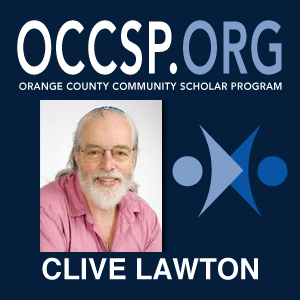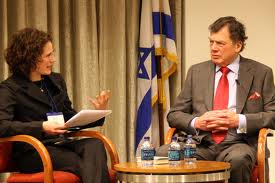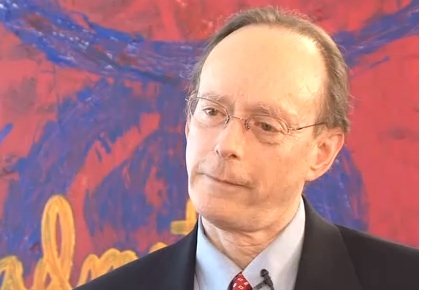Category Archives: Jews in America
“The Pew data are best seen as a starting point for future research, as they raise a host of interesting questions” for the Jewish community
“…well over half of those we think of as making up American Jewry are not part of the Jewish future”
This gallery contains 0 photos.
My way of expressing the current state of affairs is that well over half...Jews “can relax; we don’t have to worry about [quantitative] numbers”
Rabbi Jonathan Sacks believes that Modern Orthodox Jews will be leading the American Jewish Community
This gallery contains 0 photos.
“It has become really clear that Orthodoxy is the only element of the Jewish...“Like synagogues, the Jewish federation system…once defined community for North American Jews. … Today, however, Federation seems distant from the lives of most Jewish young people….”
This gallery contains 0 photos.
Like synagogues, the Jewish federation system (usually referred to simply as “Federation”) is another...Gary Rosenblatt Considers Rabbi Rick Jacobs Statements about Intermarriage
Consider this excerpt from the major address given by Rabbi Rick Jacobs, president of the Union for Reform Judaism, at last month’s biennial of the Reform movement in San Diego.
“Incredibly enough … I still hear Jewish leaders talk about intermarriage as if it were a disease,” he told some 5,000 constituents. “It is not. It is a result of the open society that no one here wants to close. The sociology is clear enough; anti-Semitism is down; Jews feel welcome; we mix easily with others; Jewish North Americans (researchers say) are more admired overall than any other religious group. So of course you get high intermarriage rates — the norm, incidentally, in the third or fourth generation of other ethnic groups as well.
“In North America today, being ‘against’ intermarriage is like being ‘against’ gravity; you can say it all you want, but it’s a fact of life. And what would you prefer? More anti-Semitism? That people did not feel as comfortable with us?
“In any event, we practice outreach because it is good for the Jewish people. Interfaith couples can raise phenomenally committed Jewish families, especially when they do it in the Jewish community that is offered uniquely by the Reform movement.”
It’s true, as Rabbi Jacobs suggests, that interfaith couples can raise deeply committed Jews. I admire him and his work, and I hope his movement is successful in its ambitious plans to make that happen. But the jury is definitely out, with demographic experts debating whether the glass is half full or half empty, based on the findings of the recent Pew Research Center study on Jewish identity. The optimists acknowledge that while it is far more likely that children of intermarriage say they have no religion, 59 percent of that cohort who are adults under 30 say they are Jewish, a significant increase in recent years. “In this sense, intermarriage may be transmitting Jewish identity to a growing number of Americans,” write Pew researchers Greg Smith and Alan Cooperman.
Others say that only a small percentage of adult children of intermarriage marry Jews, and that based on projections of current data, less than 10 percent of them will in turn raise their children as Jews. Sociologist Steven M. Cohen cites the remark of the late American Jewish Committee sociologist Milton Himmelfarb when asked what to call the grandchildren of intermarried Jews. “Christian,” he said. (Cohen adds: “He was approximately 92 percent correct.)
Commenting on Rabbi Jacobs’ biennial remarks, Cohen said he thought it “irresponsible” for the Reform leader not to promote Jews marrying Jews. “Isn’t it an inherent obligation” for him to do so? he asked. And just because it may be going against the popular grain, “does that mean rabbis shouldn’t encourage Shabbat observance, keeping kosher, etc.?”
Gary Rosenblatt, “‘Being Against Intermarriage is Like Being Against Gravity'”, The Jewish Week (17 January 2014), 7.
“Traditional Jewish institutions must seek guidance from creative young leaders, and some have begun to do so…”
Traditional Jewish institutions must seek guidance from creative young leaders, and some have begun to do so. Young Jews are finding ways to be Jewish outside of traditional Jewish institutions, but that does not mean we have to battle for who controls Jewish life….
We need to cultivate this spirit of openness and exchange between new efforts and traditional Jewish institutions. Both are important for the renaissance. While there is exuberant energy outside the established Jewish community, there are tremendous financial, structural, and human resources in our large institutions. These resources can, and should, be used to educate and empower our youth. While change may happen more quickly in new efforts, existing organizations are capable of making a significant difference in Jewish life if they are willing to adapt to the conditions of the twenty-first century. They need to reach out to young people and invite their ideas and their leadership.
Edgar M. Bronfman and Beth Zasloff, Hope, Not Fear: A Path to Jewish Renaissance (New York: St. Martin’s Press, 2008), 167-168.
A “problem with the whole idea of “affiliated” and “unaffiliated” is that it depends on an outdated model for Jewish community…”
The problem with the whole idea of “affiliated” and “unaffiliated” is that it depends on an outdated model for Jewish community. The fact that young Jews are not affiliating in the old-fashioned way indicates there is something wrong with our institutions, not that there is something wrong with our youth. We have to let go of old ways of defining what it means to be an involved Jew and look to the kind of involvement that young Jews themselves seek. It takes some imagination to understand that the decline of Jewish institutions does not necessarily mean the decline of Judaism. Our question should not be “How can we get unaffiliated Jews to affiliate?” but “How can we inspire young Jews to understand Judaism as important for their own lives and for the world?” We should not be concerned with keeping Jewish institutions alive, but with keeping Judaism alive.
Simply because young Jews are not involved in the same way that their elders were does not mean that they are completely disengaged from Jewish life. While they may stay away from synagogues or Jewish Community Centers, they are clearly interested in Judaism. … They want to be Jewish, but on their own terms, as well they should.
Edgar M. Bronfman and Beth Zasloff, Hope, Not Fear: A Path to Jewish Renaissance (New York: St. Martin’s Press, 2008), 157-158.
“…by the 1960s, there were hints of the dramatic changes that were to take place in American Judaism in the following decades”
Only with hindsight can we see that, by the 1960s, there were hints of the dramatic changes that were to take place in American Judaism in the following decades. For the most part, the immense transformation of Reform into a movement of considerable ritual and its effort to grapple with the presence of intermarried couples and nontraditional families was barely visible even by the middle of the 1960s. The demands of Conservative Jews for a strong statement of what the branch believes and for gender equality, both flashpoints of the 1970s, were barely discussed in 1965. And, among the Orthodox, even in the 1960s, the rigorous observance that, beginning in the 1970s, would characterize so many children of the moderate Orthodox of the 1940s and 1950s was still under the surface. Right up to the Six-Day War of 1967 and even beyond, in some ways, little had changed from earlier decades. But momentous transformations were just around the corner.
Marc Lee Raphael, The Synagogue in America: A Short History (New York & London: New York University Press, 2011), 168.


